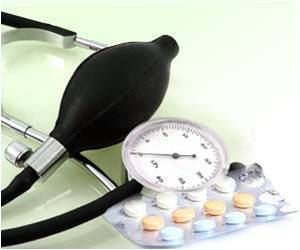“Media coverage has examined how and why COVID-19 is disproportionately impacting communities of color to some degree. However, it is critical that we continue to examine and explain the degree to which the pandemic has widened the divide among race/ethnic and class groups in the U.S. and exposed the systemic and institutional cracks in our health care system in terms of health care equity for people who are under-represented and populations that face disadvantages. COVID-19 has also reminded us that when we design interventions, it is important to consider health equity from the beginning rather than as an afterthought,” says Adam Bress, Pharm.D., M.S., lead author of the paper, an associate professor of population health science in the Division of Health System Innovation and Research at the University of Utah School of Medicine in Salt Lake City and an investigator at the VA Salt Lake City Health Care System.
‘COVID-19 has disproportionately affected people from different racial and ethnic groups, those who are from under-resourced populations and communities that face historic or systemic disadvantages. Discussions and research are ongoing to address what many experts label as long-existing inequities in the U.S. health system and thus the pandemic has enabled to magnify health inequities for people with high blood pressure.’
A panel of frontline clinicians, researchers and leaders from diverse backgrounds recently convened virtually at the 4th Annual University of Utah Translational Hypertension Symposium to discuss how the pandemic has worsened inequities in blood pressure control and to highlight the environmental and socioeconomic factors contributing to disparities within the health care system, as well as strategies to help close the gap going forward.
The group also discussed the latest research on trends in hypertension care and effective ways to improve outcomes, and this study reflects a comparison on hypertension statistics before and during the COVID-19 pandemic outlined in previously published research.
One large nationwide study of over 50,000 adults indicated the number of people maintaining healthy blood pressure levels had been declining even prior to the pandemic, with lack of health insurance and access to health care being key factors.
High blood pressure in this study was defined as greater than 140/90 mm Hg (the current American Heart Association guidelines define high blood pressure as 130/80 mm Hg). The research showed that from 2017-2018, only 22% of uninsured people in the study had healthy blood pressure levels, compared to 40-46% of the people who had some form of health insurance.
Additionally, among the people who had not seen a health care professional in the previous year, only 8% had their blood pressure under control, compared to 47% of those who reported seeing a health care professional. The results also indicated Black adults were 12% less likely to have healthy blood pressure levels compared to white adults.
One nationally representative audit of practices in the U.S. shows that during the second quarter of 2020, new health care visits for the purpose of managing high blood pressure, both in-person and virtual, decreased by 39% compared to the same quarter in 2018 and 2019.
A dangerous decrease in hospitalizations due to heart attacks, strokes and heart failure since COVID-19 was noted in another study of hospitalizations, yet it also found a 20% increase in out-of-hospital deaths during the same time period.
The COVID-19 pandemic caused a substantial shift in health care for hypertension – from in-person office visits to primarily virtual appointments. As the number of virtual health care appointments increased substantially since March 2020, many patients did not have access to validated home blood pressure monitors to regularly check their blood pressure.
The lack of access to devices needed to monitor blood pressure, as well as the lack of internet access and/or inadequate or limited digital literacy to participate in virtual appointments posed significant barriers. Additional obstacles to achieving healthy blood pressure levels are the challenges of adherence to medication regimens and lifestyle modifications.
Lack of access to healthy foods or health care facilities, along with the costs of medications and, in some cases, a lack of understanding of the importance of medication, can all have a negative impact on hypertension. Research shows health care professionals may also have biases, some based upon personal beliefs and/or stereotypes, leading to a difference in quality of care and clinical inertia.
One study determined clinicians’ biases about their perceptions of medical agreeableness or acceptance of medication recommendations among Black patients versus white patients potentially had a negative effect on which treatment options were offered and/or implemented.
Clinical inertia — clinicians’ failure to initiate or intensify antihypertensive therapy when blood pressure goals are unmet — can also result in high rates of inadequate blood pressure control. The researchers note another concerning trend is a patient’s distrust of the health care system, fueled by years of institutional racism, historical atrocities in medical care and research such as the Tuskegee study of syphilis in Black men, and inadequate representation of people from diverse racial and ethnic groups in clinical trials and as health care professionals.
Community-based interventions can help to foster patient trust and improve health care access. One trial highlighted was the highly successful BARBER trial, where barbershops in predominantly Black neighborhoods in Los Angeles encouraged people 1) to meet with pharmacists embedded in the BARBER shops regularly to discuss and manage their blood pressure, or 2) promoted healthy lifestyle choices with routine care by a physician.
At six months, people who participated in the pharmacist-led intervention achieved a 21.6 mm Hg greater reduction in systolic blood pressure and had a 51.9% greater increase in blood pressure control compared to those who did not receive any intervention. At 12 months, the results were sustained.
There is also a low proportion of medical school students, researchers and participants in health care research who are from diverse racial and ethnic groups, particularly from under-represented and under-resourced communities. One analysis found that among all blood pressure trials registered in the U.S. at ClinicalTrials.gov, only 5.4% had enrolled exclusively Black adults.
This suggests there are few interventions and therapies being studied and designed specifically for Black adults with hypertension.
“Too often, individuals are blamed for their health care conditions, without considering the multiple levels of social factors and context that contribute to persistent and pervasive health inequities. Health inequities are a social justice issue. We need to be more direct and honest about the reasons for health disparities today and commit to structural solutions to begin to address them. These factors include historic structural and interpersonal racism; the different lived experiences for people of color and other groups facing disadvantages; the unacceptably low levels of public investment in public health, universal health care, and science; and the long-term effects of unequal access to affordable and high-quality health care among many others. We need to ensure that these meaningful conversations and changes in policy, research, health care and education persist after the COVID-19 pandemic in order for there to be sustained progress in achieving greater health equity,” says Bress.
Source: Medindia



